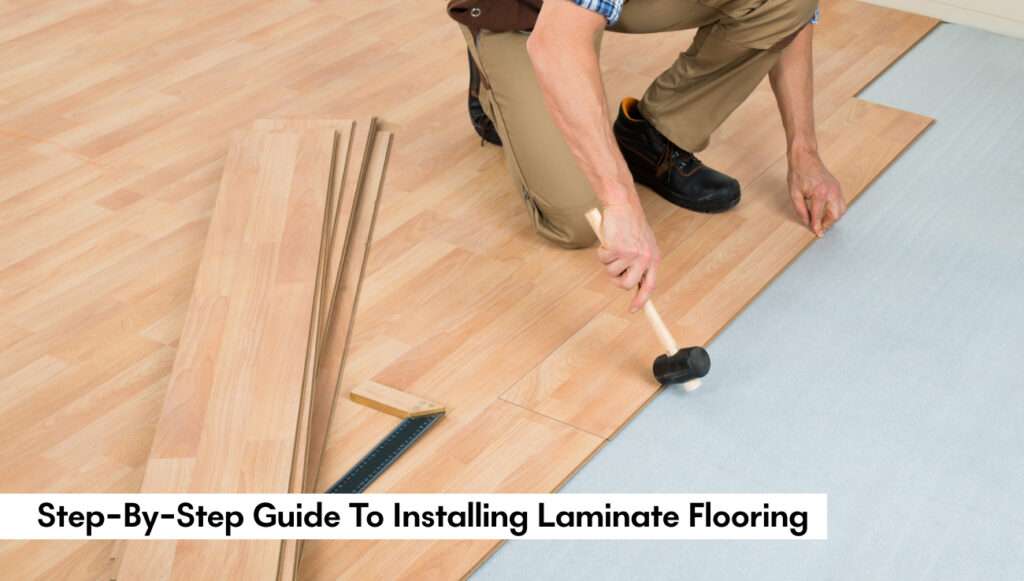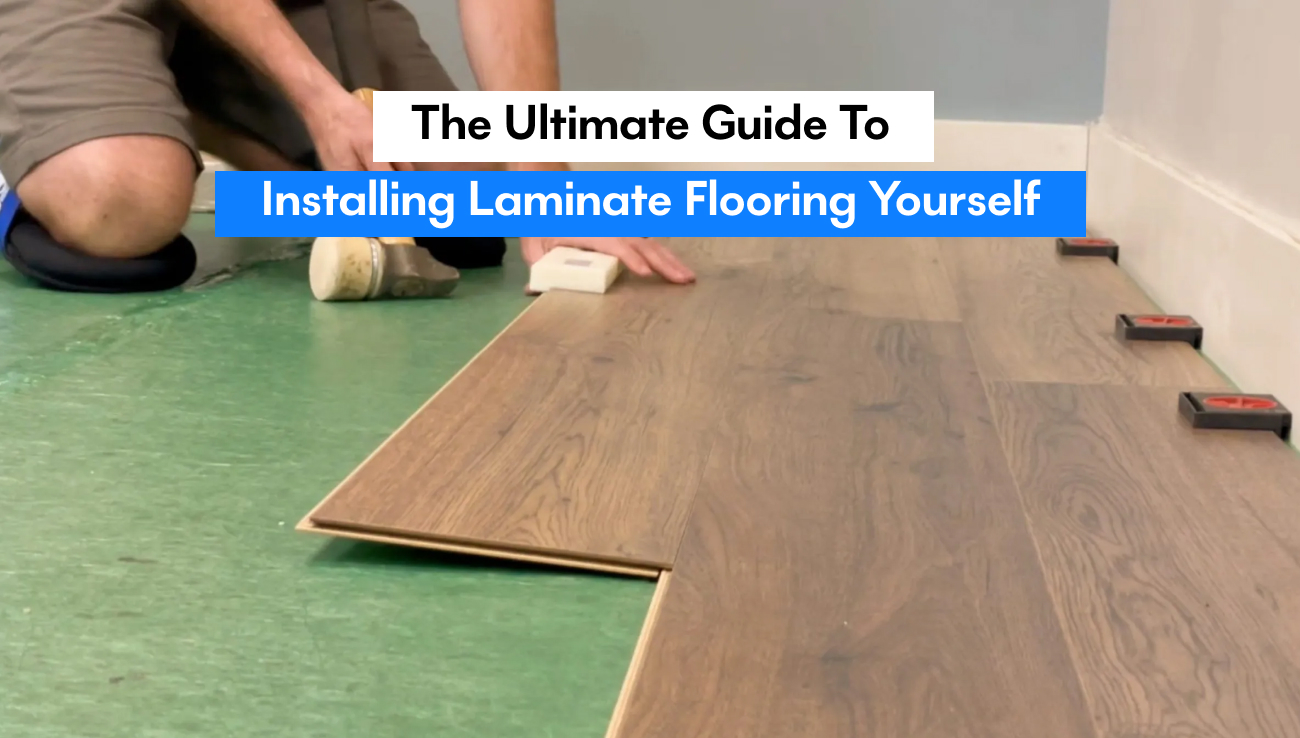Although installing laminate flooring yourself can be stressful, it’s rather simple if you have the correct tools and understanding. In addition to saving you money compared to hiring experts to complete the work, you’ll feel good about altering your area yourself. This comprehensive how-to guide will walk you through every stage of getting ready for installing laminate flooring and decrease the laminate flooring installation cost.
Why Laminate Flooring?
After going over the fundamentals of laminate flooring, let’s talk about how to install it. Right now, though, laminate floor why? They are quite reasonable laminate flooring installation cost while still being incredibly sturdy and reliable. They are also very easy to maintain and clean. There are so many different types and designs of laminate floor that some of them even mimic tile or hardwood floors. This makes matching your home’s interior style simple. What is more, is that it is resistant to scratches and moisture thus perfect for heavy traffic areas.
Laminate floor is fabulous for DIYers with an easy click-lock installation system; therefore, the whole process becomes very smooth and easy.
Step-by-Step Guide to Installing Laminate Flooring

Now that we have discussed the merits of laminate floor let’s proceed with the laminate flooring installation process.
1. Assemble Your Tools and Materials
Setting up the necessary supplies and equipment should come first. This avoids interruptions from having to run outside and acquire something in the middle of the procedure, as well as wasting time. The following are some items you could require:
- Laminate flooring planks
- Underlayment
- Tape measure
- Utility knife
- Spacers
- Tapping block and pull bar
- Rubber mallet
- Miter or circular saw
- Pencil and straight edge
- Floor cleaner and mop
- From here, proceed to the next step once you have gathered all of these.
2. Prepare the Subfloor
All a successful laminate flooring installation builds off of is good preparation. So the first, and probably the most obvious, is cleaning the subfloor. Remove any debris, dirt, or old nails that could interfere with the laminate planks. Also, ensure that the subfloor is dry and level.
If the subfloor has some uneven spots, then fill them using a leveling compound. Also, check for moisture, especially if installed over concrete. If so, one will definitely need a moisture barrier.
Once you are ready for subfloor installation, then you can install the underlayment.
3. How to Install Underlayment
Underlayment is an integral part of Laminate flooring installation. It helps create a softer underfoot feel and supports sound absorption. It also provides a moisture barrier.
Underlayment: Unroll the underlayment and trim the edges to fit the room. Make sure that pieces do not overlap but butt snugly against each other. Tape the underlayment down firmly.
4. Measure and Plan the Layout
Before laying the planks, measure the room to determine how many planks you will need. Make sure to leave 1/4 inch gap between the flooring and walls to allow expansion. One way to achieve this is with spacers.
- Determine which direction you want the planks laid down. The most visually pleasing would typically be parallel to the longest wall or first light source.
- Instal the end of the planks at least 12 inches apart. Your final install will be strong and attractive.
- Having your plan in place, you are now ready to begin installing your laminate planks.
5. Step-by-step on Laying Laminate Planks
It’s a fun time! Start by installing the first plank with the tongue facing the wall along one corner of the room. Use spacers between the plank and the wall to keep the expansion gap.
- Proceed to step 2 by inserting the second plank by aligning the tongue and groove system. Tapping the planks together gently will be done using a tapping block and mallet.
- Taping the planks along the remaining edges ensures that they stay in place, allowing you to advance through the room, where you will be able to cut the last plank in every row to the right size with the aid of a saw.
- Once you have completed the first row, you should move on to the second row, staggering seams to add even more strength and visual appeal.
6. Cutting planks around obstacles
When installing, you will be cutting planks to fit around doorways, vents, or other obstructions. Make measurements where the cuts are needed.
Cut the sheets with a utility knife or saw. For more complicated cuts around door frames, a jigsaw will come in handy.
Take your time in ensuring that the fit is snug around obstacles without gaps.
7. Finishing the Final Row
Take measurement of the remaining space between the previous row and the wall when you finally get to the last row. You would likely want to cut the planks lengthwise for a better fit.
- Use a pull bar to tighten up the last planks. Take out spacers along the wall.
- Now that your laminate is down, it’s time to complete the finishing details.
Final Details Once Installed
The final details when your laminate floor is installed include the following.
1. Install baseboards or molding
Baseboards or quarter-round molding can be applied to mask the space that is established between the floor and wall due to the expansion gap. The molding is nailed into the wall, not to the floor, to allow for free expansion and contraction of the laminate material.
2 Clean the Floor
Clean the floor after the laminate flooring installation is completed with a damp mop or laminate floor cleaner to get rid of dust and debris. This helps maintain a clean-looking surface that’s ready for use.
3 Inspect Your Work
Finally, walk around the room and inspect your work. Make sure that all planks are well clicked into place to create no visible gaps or uneven spots.
Dos and Don’ts for a Successful DIY Laminate Flooring Installation
Installing laminate flooring is very rewarding but can also bring its hardships. To avoid some frustrations, please remember the following tips for a smooth laminate flooring installation:
- Acclimatize the Planks: Before installation, place the laminate planks in the room for 48 hours to acclimatize them to the temperature and humidity of the room.
- Use the Right Tools: There is much need for a tapping block and a pull bar for tight-fitting planks. Never hammer the planks as this can damage it.
- Check the Subfloor: Ensure your subfloor is clean, dry, and level. Your installation will be poor if your subfloors are uneven, and this might cause damage later in time.
Conclusion
Laminate flooring can give a fresher and more contemporary look to your space. Using appropriate tools, a little patience, and our guide, you may achieve results at the professional level without breaking the bank by using a contractor. Whether you like your front room, bedroom, or basement, laminate flooring is a strong, fashionable flooring material for every room in your house. So assemble your materials today and get it done! You will be amazed at what you can accomplish by completing this do-it-yourself project.
Frequently Asked Questions
Q. How do I install laminate flooring on my own?
A. You will need Laminate planks, underlayment, a tape measure, a utility knife, spacers, a tapping block, a pull bar, a rubber mallet, and a saw (miter or circular).
Q. Can I install laminate flooring over uneven subfloors?
A. No, the subfloor must be clean, dry, and level. Apply a leveling compound to uneven patches before installing.
Q. How to Cut Laminate Plank around Obstacles?
A. The best options for cutting through laminate planks are measuring the room and marking the plank, followed by cutting with a utility knife or a saw. A special jigsaw is available if the cut needs to be around the door frame.
Q. Do I leave some gaps between the wall and laminate flooring?
A. Yes, there should be at least a 1/4-inch expansion gap between the planks and walls so that the floor can expand and contract.
Q. Do I need to acclimate laminate flooring before installation?
A. Yes, but leave the planks to acclimate in the room for 48 hours before installing them in room conditions, such as temperature and humidity.
